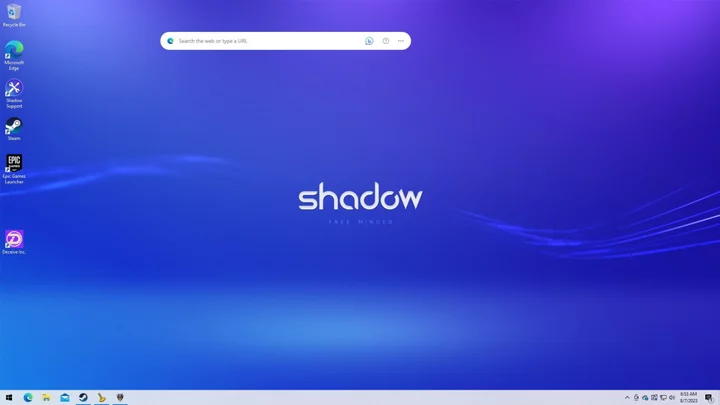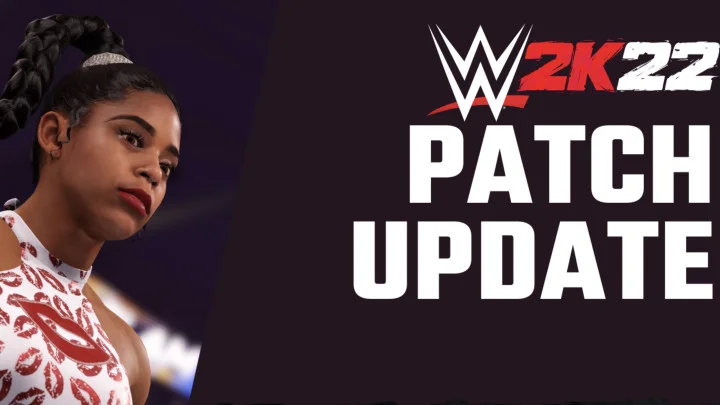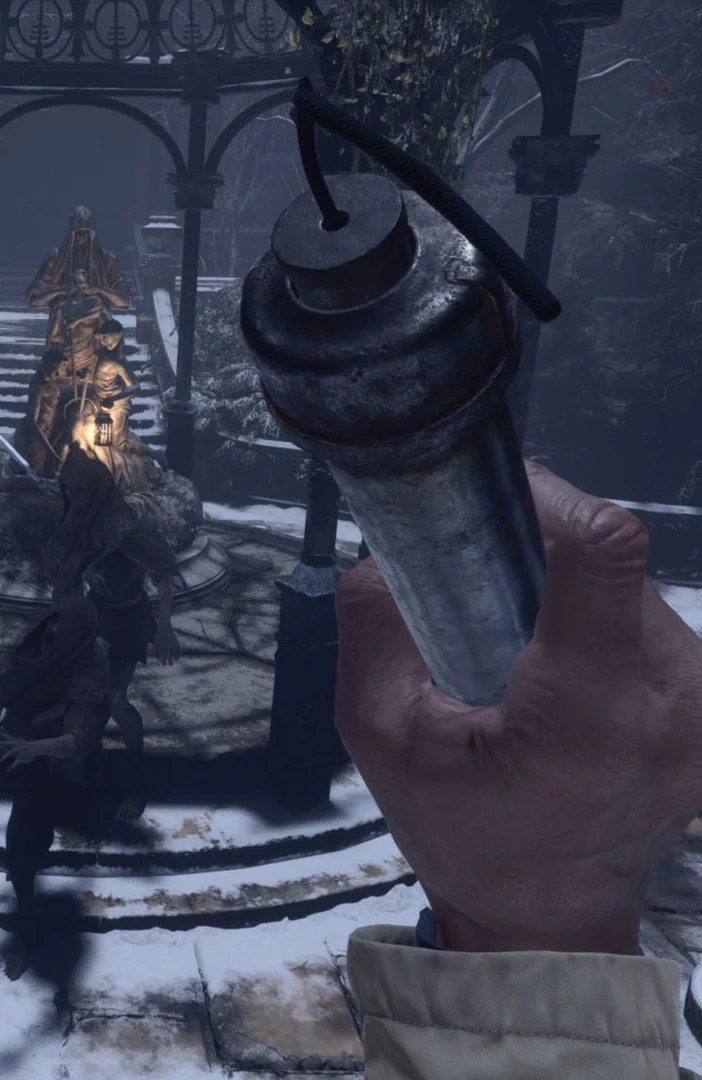The Shadow remote PC streaming service has experienced a few bumps in the road since we last looked at it in 2021. Its company, Blade, filed for bankruptcy in March of that year and was purchased two months later by the cloud computing firm OVHcloud. The new Shadow is a less explicitly gaming-focused service than it was at launch, but it's still running strong by offering full access to Windows PCs with enough power and storage to both play games and get work done. In fact, it works better than ever, with impressive responsiveness that makes it feel like you're playing local games. Shadow is much more expensive than gaming-only services like Nvidia GeForce Now or Xbox Game Pass Ultimate, but it does so much more, making it an Editors’ Choice winner for remote PC streaming services.
Shadow Plans and Pricing
The entry-level Shadow PC is the low-level gaming tier, with two options. Shadow PC provides an Intel Xeon 3.5GHz equivalent CPU, an Nvidia GeForce GTX 1080 GPU, 12GB RAM, and 512GB storage for $32.99 per month (or $164.90 per six months). Shadow PC With Power Upgrade offers an AMD EPYC 7543 CPU, an Nvidia RTS A4500 GPU, and a massive 28GB of RAM with the same 512GB of storage for $49.99 per month (or $265.90 per six months). You can add an extra 256GB of storage to either tier for $2.99 per month (or 5TB for $59.80).
(Credit: Shadow)Shadow PC Pro is the step-up tier for content creators and other professionals. A $34.99 per month ($174.99 per six months) membership gives you an Intel Xeon 2.5-to-3.1GHz CPU, an Nvidia GeForce GTX 1080 or Nvidia Quadro P5000 GPU, 12GB of RAM, and 1TB of storage. The Shadow PC Pro Advanced plan ($54.99 per month or $274.99 per six months) ups that to an AMD EPYC 7543P CPU, Nvidia GeForce RTX A4500 GPU, 28GB of RAM, and 1TB of storage. Extra storage is available on Shadow PC Pro for a much steeper $17.94 per 256GB per six months (with a 5TB maximum).
Shadow PC Enterprise is the organization-level tier, intended for entire fleets of users. It can be scaled to fit business needs, but it offers the same hardware as Shadow PC Pro for $49.99 per month or $69.99 per month based on specs.
For testing, Shadow provided us with a Shadow PC With Power Upgrade account.
Installing Game Stores on Shadow
The Shadow PC app is available for Windows, macOS, Linux, and Raspberry Pi OS, along with Android and iOS smartphones and tablets, Android TV and tvOS smart TV platforms, and the Oculus Quest. Shadow is also accessible via a web portal, though it’s more limited than the dedicated clients in terms of features and supported resolutions, and is currently in beta. Still, all those choices easily make Shadow the most flexible remote gaming service in terms of platforms. I mostly tested Shadow on Windows PCs.
The Shadow experience is refreshingly direct, with no curated interface like GeForce Now, PlayStation Cloud Streaming, or Xbox Cloud Gaming. You open the app, wait a minute for the virtual PC to literally boot up Windows, then click Open Shadow to access that PC. The computer immediately opens to a Windows desktop.
(Credit: Shadow)From this view, you can interact with the remote PC just as if it was your own PC. It’s simply a Windows 11 Home computer with persistent storage that lets you set it up with whatever software you can put on it. Plus, it retains everything you've installed every time you start it up, just like a physical PC. I connected it to my Microsoft ID, then installed the Epic Games Launcher and Steam. That let me access the three big PC gaming services (Epic Games Store, Steam, and Xbox Games Pass Ultimate) on the system.
With the Shadow app filling your computer screen, the only indication that it’s a remote PC is a small, transparent icon on the desktop that opens a menu (you can also access it by pressing Win + Alt + O). The menu displays the current frame rate, bandwidth use, and latency, and lets you adjust how the client interacts with your display, audio, and USB devices. It also lets you toggle whether the quick menu is displayed, switch between full-screen and windowed modes, and lock or unlock the mouse cursor to the virtual PC or your entire desktop when in windowed mode.
By default, Shadow automatically detects your mouse and keyboard inputs, and you can use wired gamepads without issue. Like any other computer, Shadow is compatible with local USB drives; you can install a set of drivers on your local system to enable USB port forwarding for that storage. With those drivers, you can use the Shadow control panel to select specific USB drives and other devices, like cameras, to connect directly to the remote PC. Bluetooth isn't supported, however.
Great Game Performance
The Windows app used close to zero local resources. While playing Baldur’s Gate 3 on the remote PC, the app used between 0.4 and 2.0% of my laptop’s CPU power and less than 200MB of RAM. Naturally, it ate up bandwidth at around 50Mbps, but that’s understandable. With that little CPU and memory use, I played the game on the remote PC at 4K resolution while having the RAM-consuming Chrome and Firefox browsers open on my local computer.
The remote PC has a fantastic network connection, both to the client (assuming your connection is good) and to other servers. It downloaded 80GB of Baldur’s Gate 3 files from Steam in just 22 minutes.
(Credit: Larian Studios)Shadow worked almost flawlessly with my laptop directly next to my router and connected over Wi-Fi 6. The video feed was consistently sharp and displayed properly on my ultrawide monitor. The virtual PC detected and used my speakers, headphones, mouse, keyboard, and Xbox gamepad (connected over USB), just like my local PC does.
The Shadow quick menu showed a latency of 20 to 30 milliseconds, which is fast enough to make playing first-person shooters feel like they're on local hardware. The service might have a bit too much lag for serious fighting games, as it puts you about two frames behind in a genre that requires strict and precise timing. However, single-player Guilty Gear Strive matches felt responsive enough for my poor skills.
Baldur’s Gate 3 looked and played fantastically on Shadow with my laptop close to the router. The remote PC’s powerful hardware rendered the game in DirectX 11 mode with higher settings than my Nvidia GeForce RTX 3060-based laptop can handle in Vulkan, all while having browsers and other apps active in the background on my local system. Baldur's Gate 3 moved about 50 frames per second at 4K resolution, and 90fps at 1080p. Mouse movement both in the game and on the remote PC felt responsive and natural, outside of some jerkiness upon first connecting to Shadow. I actually ended up playing the game mostly through Shadow rather than my local hardware at that point, because of the superior performance.
Moving to my couch, about 15 feet from my router, Shadow's performance was similarly strong—with a caveat. Overall, the input lag was around 20ms to 30ms, but there were a few moments when the connection hiccuped and the input and picture both stuttered for a few seconds. At those times, the quick menu showed 330ms latency.
The majority of the time, Hollow Knight felt responsive and playable, and that’s a game that requires precise movement and timing. During those hiccups, though, everything was thrown off. To be fair, I also experienced a drop in responsiveness between my desk and my couch when testing Nvidia GeForce Now, and that service generally felt less responsive in that location compared with Shadow. Obviously, this experience will vary depending on the speed and stability of your internet connection.
I also noticed that on my travel notebook, a Lenovo Yoga, the touch screen didn’t work in Shadow. In fact, it made the mouse cursor disappear when I tapped the screen. I could see my mouse movement by opening the quick menu and closing it again, but I had to be careful not to touch the screen to keep the cursor visible.
Public Wi-Fi is extremely hit-or-miss with Shadow, and you can expect more misses than hits. However, to my utter shock, a local coffee shop in my neighborhood delivered a rock-solid Shadow experience thanks to the network’s 200Mbps up/down speeds. I played a Deceive Inc. match that felt as smooth and responsive as playing on my home PC.
Shadow's Performance Numbers
Although Shadow's gaming performance was rock-solid in testing, even the remote PC With Power Upgrade lacks the processing power you'd see in a fully kitted-out local gaming system. Its A4500 GPU is comparable with a 3070 Ti, which is hardly underpowered, but not as elite as the 4080 GPU found in the Lenovo Legion Pro 7i Gen 8 gaming laptop ($2,749 as tested). It also doesn't quite measure up to the 4080 equivalent hardware available through Nvidia GeForce Now’s Ultimate subscription tier.
The remote PC scored 10,303 in 3DMark’s Time Spy benchmark, with a graphics score of 13,225 and a CPU score of 4,576. That’s excellent, but the Legion Pro 7i scored almost twice as much (18,420) on the same test. The Shadow system also scored a “legendary” 38,005 in 3DMark’s Night Raid benchmark, but that’s half as much as the Lenovo’s 82,006. The lower-end Lenovo Legion Slim 5 Gen 8 ($1,549 as tested) offered performance a bit more in line with Shadow’s remote hardware, scoring 11,093 in Time Spy and a significantly higher 62,906 in Night Raid.
Of course, considering the Shadow client tops out at 60 frames per second even with the absolutely best network connection, all that extra local power would mostly be leaving frames on the table. To really take advantage of a truly high-end gaming PC, you need a gaming monitor and a connection that supports 120Hz, 144Hz, or even higher refresh rates.
The service’s enterprise-grade, server-mounted hardware handles work tasks well, though it doesn’t match top-of-the-line local hardware and stumbles a bit with video processing. Shadow With Power Upgrade scored a 5,876 in PCMark 10 (7,571 in the Productivity test suite), which means the service is excellent for everyday tasks, though most gaming laptops we test easily break 7,000; the Legion Slim 5 Gen 8 scored 8,268 and the Legion Pro 7i Gen 8 scored 7,843. Shadow’s score seems to be bogged down primarily by video editing (4,928); every other test in the suite scored well over 6,000, with app start up, spreadsheets, photo editing, and rendering tests breaking 9,000.
Nvidia GeForce Now doesn’t support our benchmarking software, so we’re unable to directly compare its performance with Shadow.
Computer in the Cloud
Shadow is by far the most powerful and flexible remote game streaming service we’ve tested. It offers better performance than the last time we looked at it, and it really can replace a gaming PC under the right network conditions. Those conditions are vital, of course, but that’s the case for all remote system streaming services. It’s more than twice as expensive as Nvidia GeForce Now, but the difference is between a full Windows PC at your fingertips with Shadow, and simply being able to run some games from your different online game libraries with GeForce Now. Shadow isn’t just an excellent game streaming service, it’s a fully functional remote PC you can use to get work done as well as play. For those reasons, Shadow is our Editor's Choice winner for game streaming services.









